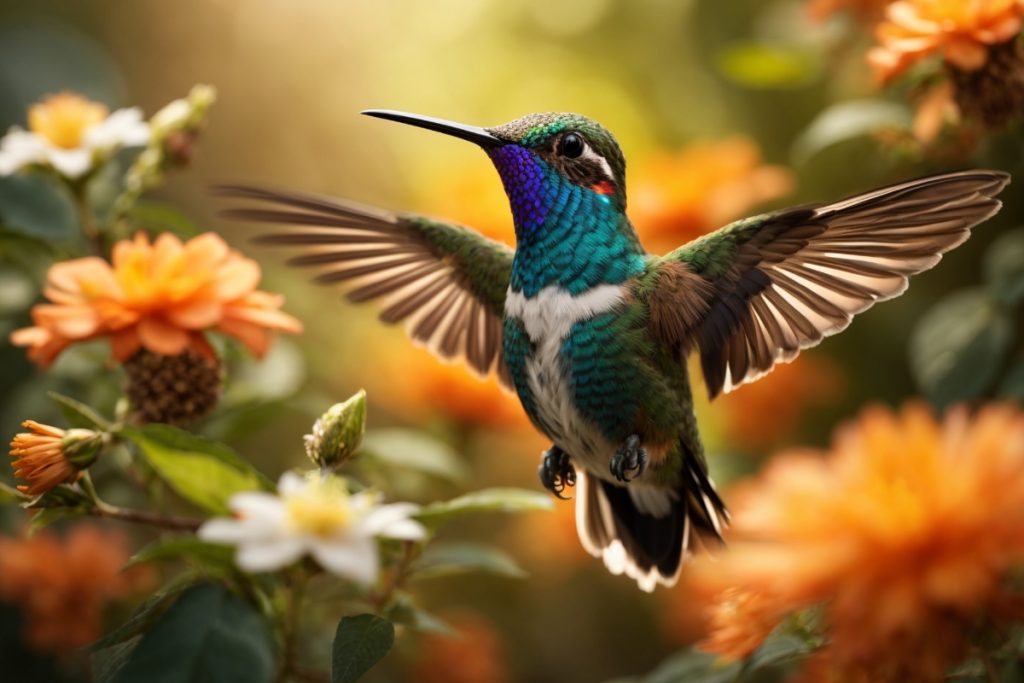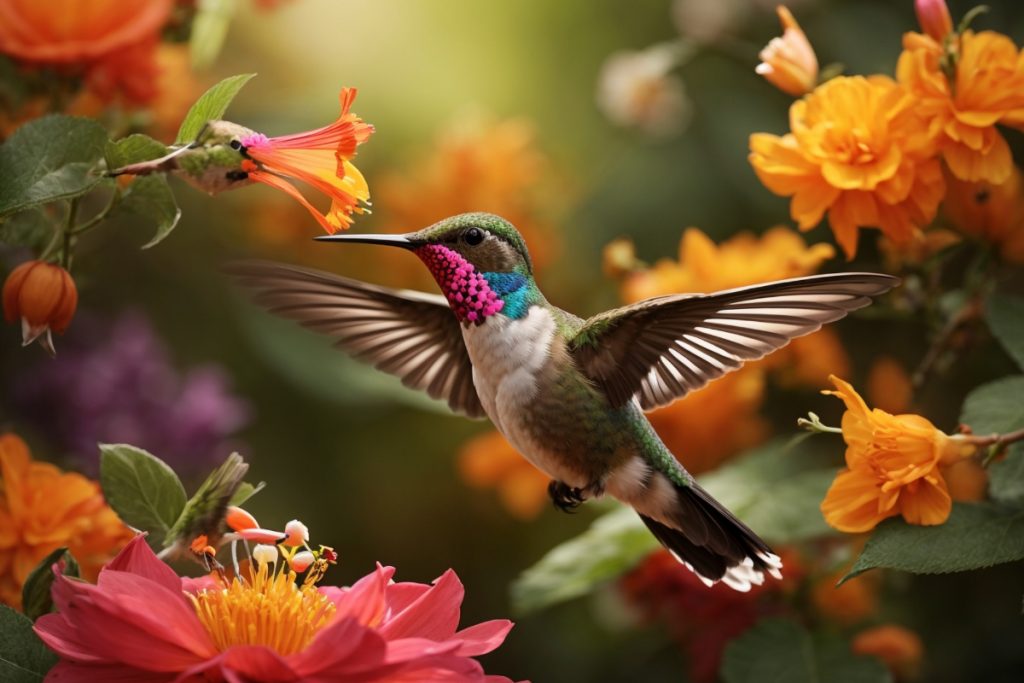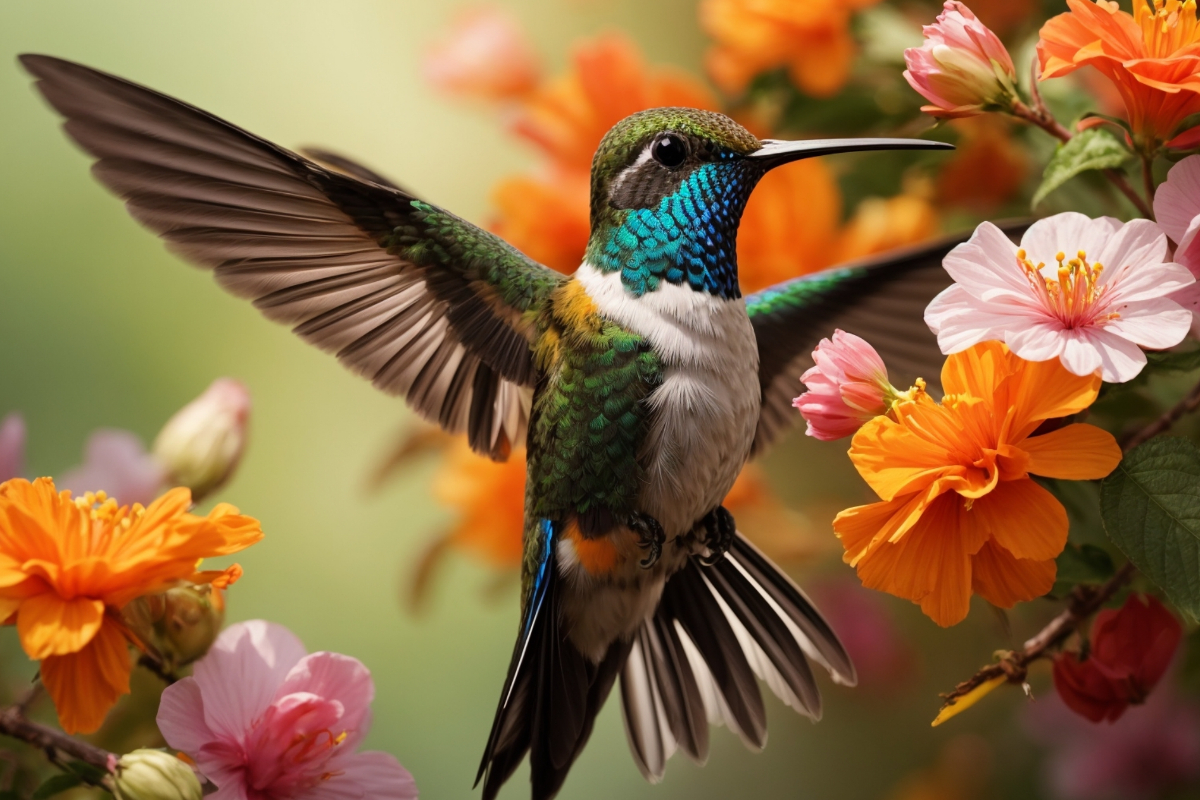Hummingbirds are truly astonishing birds. Their ability to hover in mid-air allows them to perform aerial acrobatics while feeding on flower nectar. But why do hummingbirds hover, and how does this unique ability let them eat lunch on the wing?
In this blog post, we will uncover the secrets behind the magical art of hummingbird hovering and mid-air dining. From their specialized anatomy to the evolutionary benefits of hovering flight, you’ll learn why these tiny birds can pull off their signature hovering feats.

The Mechanics Behind Hummingbird Hovering
Hummingbirds flap their wings incredibly fast, typically beating them 30 to 80 times per second. This rapid flapping creates the characteristic humming sound that gives them their name. The wings also rotate in a figure 8 pattern that generates enough lift for hovering on both the upstroke and downstroke. This allows hummingbirds to stay suspended in one place.
In comparison, most birds can only create lift on the downstroke. Without being able to hover, they would crash into a flower when trying to feed from it mid-air!
Built for Speed and Maneuverability
Hummingbirds have several special anatomical adaptations that power their hovering ability:
- Large chest muscles, making up over a third of their body weight, to flap their wings at high frequencies
- An articulated wrist that permits the complex figure 8 wing movement
- Their wings are shaped to provide lift during both halves of each flap
These features give hummingbirds exceptional speed and aerial maneuverability compared to other birds. They can fly forwards, backwards, sideways, and even upside down!
By controlling hovering, hummingbirds have much more precision when approaching flowers to feed. Hovering next to blossoms allows them to carefully insert their long beaks and tongues into flower tubes to lap up nectar.
Why Hovering Flight Evolved in Hummingbirds
Scientists think that the ability to hover originated around 22 million years ago in ancestral hummingbirds. Over time, natural selection favored individuals that could hover better because of the significant feeding advantages it provided.
Energy-Rich Meals
Flowers adapted to pollination by hummingbirds produce more sucrose-rich nectar than those pollinated by bees or other insects. Hovering right next to these tubular blossoms lets hummingbirds efficiently tap into this prime energy source.
The extra calories from nectar gave better hoverers more energy to court mates and produce offspring. So genes enabling enhanced hovering got passed onto more descendants.
Reaching Inaccessible Flowers
Many plants in South America evolved with deep, curved flowers perfectly suited to pollination by hovering hummingbirds. Bees and other pollinators couldn’t easily access these flowers.
But hummingbirds with precise hovering control could exploit these exclusive nectar resources. This drove the evolution of specialized traits like rotated wrists and enlarged flight muscles to improve hovering performance.
Staying Safe from Predators
Hovering also helps hummingbirds quickly evade predators. They can instantly change direction and speed without needing to land first. Given their tiny size, this nimbleness is key to not becoming a snack for bigger animals!
So by opening up new feeding opportunities while also improving safety, the ability to hover mid-air provided hummingbirds a big evolutionary advantage.

Hovering Underlies Hummingbirds’ Aerial Agility
Hummingbirds have perfected the art of hovering to unlock more efficient nectar feeding. This signature behavior sets them apart from all other birds and even earned them a descriptive name.
Hovering requires specialized anatomical features that enable their distinctive figure 8 wing movement. And scientists think natural selection favored ever-better hovering ability over millions of years because of the significant payoffs it brought.
The next time you spot a hummingbird effortlessly suspended in mid-air, remember it’s thanks to the evolutionary power of hovering flight! This ability lets tiny hummers carry out death-defying feats – like dining on the wing – that captivate nature lovers worldwide.
Useful Links:
Related Posts to Read:
References:
- About Hummingbird (Link).
